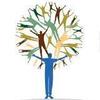Search Results
- All results (2432)
- Customs (9)
- Resources (239)
- Standards (15)
- Organisations (2043)
- News (22)
- Stories (75)
- Quotes (11)
- Guidelines (1)
- Q & A (7)
- Videos (3)
Consultancy Project on the Development of a Public Private Partnership Framework and Action Plan for Disaster Risk Reduction (DRR) in East Asia
As a follow up to the 3rd Asian Ministerial Conference on DRR (AMCDRR), the UNISDR commissioned a review of the current status and framework for public-private partnerships (PPP) for disaster risk reduction (DRR) in East Asia. The objective of the review was to develop a common action plan that...
Disaster Grantmaking: A Practical Guide for Foundations and Corporations

A joint project of the EFC and the US Council on Foundations (COF), the disaster response initiative sought to develop a set of principles and practical tips to guide and inform foundations and corporate grantmakers interested in becoming more effective and strategic in their responses to...
People In Aid Code of Good Practice

The People In Aid Code of Good Practice is a quality framework covering all aspects of human resources and people management. It comprises 7 principles, each with specific indicators. The Code supports continuous improvement of NGOs‘ HR practices, facilitates stakeholder engagement, and measures...
European Commission Humanitarian Operation (ECHO) - Regulation
This page contains the full text of EU regulation 83/181, concerning the ''exemption from value added tax on the final importation of certain goods''. Articles 40-55 are specific to VAT exemption for charitable goods and disaster relief work. The situations where VAT exemption applies are similar...
Building Resilience to Natural Disasters: A Framework for Private Sector Engagement

This report is part of a series of multistakeholder projects aimed at catalysing action on key global challenges. These dialogues, organized in partnership with the World Bank and the UN International Strategy for Disaster Reduction, were augmented by private sector interviews conducted in...
Preparing employees to be disaster-ready volunteers - a guide to building an effective volunteer training program

This guide provides an overview of key issues for companies to consider when establishing a program to train and deploy employee volunteers to expedite disaster relief. They include: • Engaging employees • Establishing relationships with relief agencies • Tapping skilled volunteers •...
R.E.A.C.T. Asia Pacific Disasters

In September and October of 2009, Asia Pacific was struck by a series of natural disasters. Samoa was hit with an earthquake followed by a tsunami. Indonesia suffered two earthquakes near Padang. Typhoons Ketsana and Parma affected the Philippines and Vietnam. These situations require coordinated...
Words into action: a guide to implementing the Hyogo Framework

This Guide has been created to provide advice on useful strategies for implementing the Hyogo Framework for Action 2005-2015: Building the Resilience of Nations and Communities to Disasters (HFA). It represents a distillation of the wealth of experience that exists throughout the world on how to...
Global Risk Identification Programme: better risk information for sound decision making
Global Risk Identification Programme (GRIP) is a multi-stakeholder initiative that directly aligns with the Hyogo Framework for Action (HFA)'s Priority Area 2: risk identification, assessment and monitoring. Although hosted by the United Nations Development Programme, UNDP, GRIP's structure, is...
InterAction's Private Voluntary Organization Standards

InterAction's Private Voluntary Organization Standards is a code of best practice for InterAction's members. The standards relate to the activity of non-profit organisations in areas of governance, volunteer involvement, support from the private sector, fundraising, service and programme...
UNOCHA Regional Office for Asia and the Pacific

Since its establishment in 2005, OCHA’s Regional Office for Asia and the Pacific (ROAP) has sought to minimise the vulnerability of populations in the region to humanitarian crises. ROAP has provided support and assistance to governments, UN agencies, NGOs and other humanitarian actors in response...
Emergency Field Handbook: A Guide for UNICEF Staff

The Emergency Field Handbook is structured around UNICEF’s Core Commitments for Children in Emergencies. These commitments outline the organisation’s role in providing protection and assistance to children and women. They make a clear distinction between life-saving interventions that should be...
Joining Forces for Change: Demonstrating Innovation and Impact through UN-Business Partnerships

Joining Forces for Change: Demonstrating Innovation and Impact through UN-Business Partnerships, a publication by the UN Global Compact Office, presents a case for partnering with the UN in addition to listing case studies of successful UN-business partnerships. The partnerships presented in the...
Joint evaluation of the international response to the Indian Ocean tsunami: Synthesis Report

Joint evaluation of the international response to the Indian Ocean tsunami: Synthesis Report examines the successes and failures as well as the constraints within which the response occurred between the first eight and 11 months of the response. It does this by distilling the findings and learning...
USAID Field Operations Guide for Disaster Assessment and Response
USAID Field Operations Guide for Disaster Assessment and Response contains information on general responsibilities for those responding to disasters, reference material for assessing and reporting on populations at risk, information on working with the military in the field, and a glossary of...
Dubai International Humanitarian & Re-Development Conference & Exhibition (DIHAD) 1-3 April 2012

DIHAD is a humanitarian aid, disaster management and re-development event that takes place in Dubai every year. DIHAD is recognised as the leading humanitarian event in the region and aims to help facilitate a greater and more efficient relationship between aid agencies, NGO's, suppliers and needy...
Information Systems for Crisis Response and Management (ISCRAM)
The Information Systems for Crisis Response and Management (ISCRAM) is a community of researchers, scholars, practitioners and policy makers involved in information management for disasters.
Livestock Emergency Guidelines and Standards (LEGS)

Livestock Emergency Guidelines and Standards (LEGS) are a set of international guidelines and standards for the design, implementation and assessment of livestock interventions to assist people affected by disasters. LEGS is based on three livelihoods objectives: Providing immediate assistance to...
Interagency Emergency Health Kit 2006 (WHO, ICRC, MSF, UNICEF, UNHCR & others)

The Interagency Emergency Health Kit 2006 (IEHK 2006) is the third edition of the WHO Emergency Health Kit which was the first such kit when it was launched in 1990. This updated third edition takes into account the global HIV/AIDS epidemic, the increasing parasite resistance to commonly available...
South Asia Earthquake 2005: Learning from Previous Recovery Operations
South Asia Earthquake 2005: Learning from Previous Recovery Operations, the second of two briefings prepared by ALNAP and the ProVention Consortium, covers targeting, participation, assessment, shelter and housing, risk reduction and policy, drawing out main lessons in each area and highlighting...

